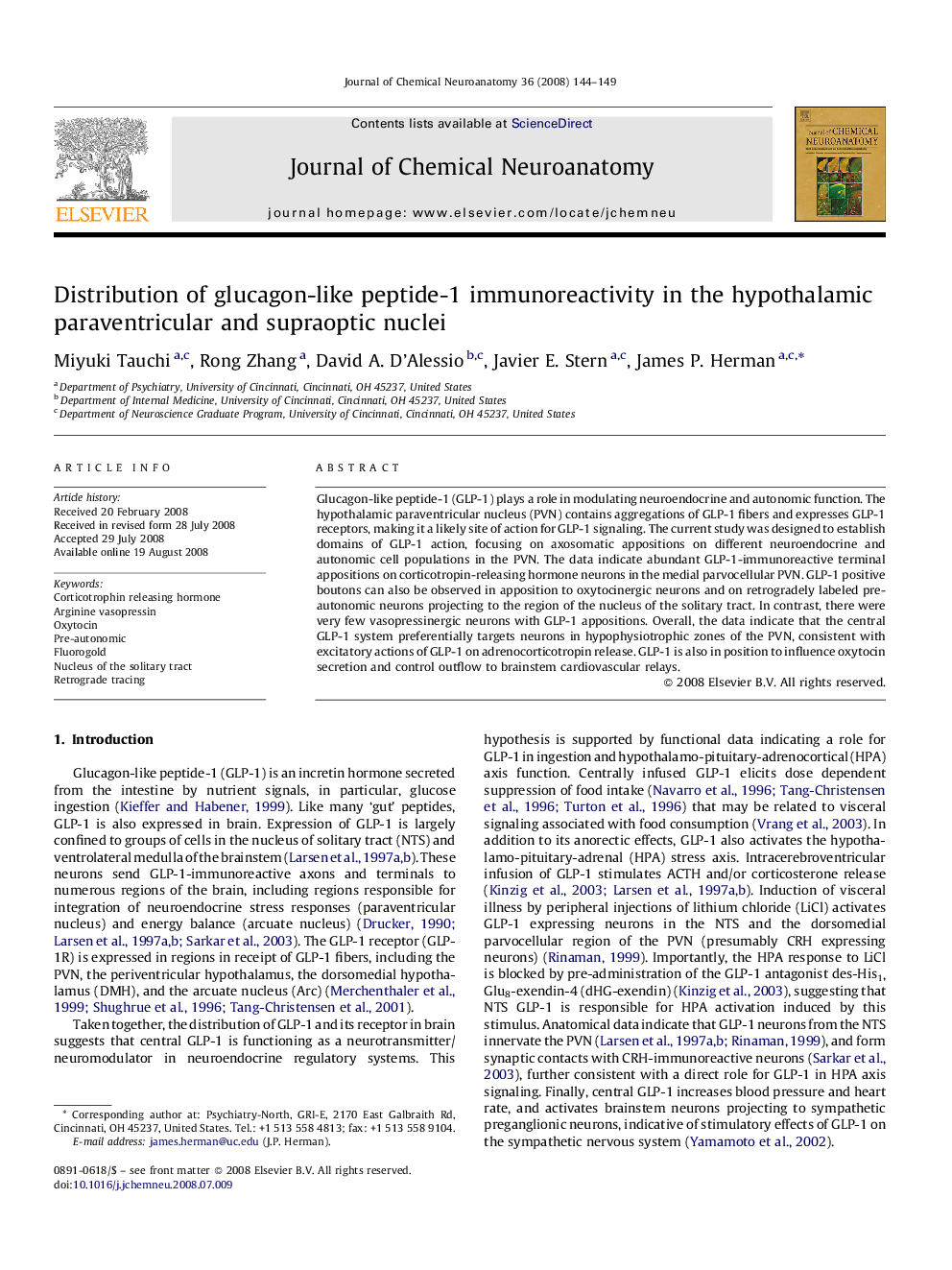| Article ID | Journal | Published Year | Pages | File Type |
|---|---|---|---|---|
| 1989337 | Journal of Chemical Neuroanatomy | 2008 | 6 Pages |
Glucagon-like peptide-1 (GLP-1) plays a role in modulating neuroendocrine and autonomic function. The hypothalamic paraventricular nucleus (PVN) contains aggregations of GLP-1 fibers and expresses GLP-1 receptors, making it a likely site of action for GLP-1 signaling. The current study was designed to establish domains of GLP-1 action, focusing on axosomatic appositions on different neuroendocrine and autonomic cell populations in the PVN. The data indicate abundant GLP-1-immunoreactive terminal appositions on corticotropin-releasing hormone neurons in the medial parvocellular PVN. GLP-1 positive boutons can also be observed in apposition to oxytocinergic neurons and on retrogradely labeled pre-autonomic neurons projecting to the region of the nucleus of the solitary tract. In contrast, there were very few vasopressinergic neurons with GLP-1 appositions. Overall, the data indicate that the central GLP-1 system preferentially targets neurons in hypophysiotrophic zones of the PVN, consistent with excitatory actions of GLP-1 on adrenocorticotropin release. GLP-1 is also in position to influence oxytocin secretion and control outflow to brainstem cardiovascular relays.
